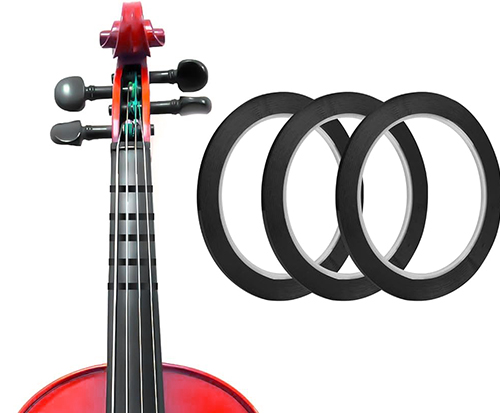All You Need to Know About the Violin Fingerboard

The violin fingerboard is a critical component of the instrument, providing a platform for the player to create beautiful music. It serves as the guide for finger placement and plays a crucial role in achieving accurate intonation and smooth transitions between notes. In this blog, we will explore the essential aspects of the violin fingerboard, including its construction, materials, maintenance, and its impact on playability, intonation, and the overall performance of this delicate instrument.
- Construction: The Foundation of Precision
The violin fingerboard is typically made of hardwood, most commonly ebony, due to its density, durability, and smooth texture. Ebony offers a stable and hard-wearing surface for the player’s fingers to glide along the strings with ease. The fingerboard is attached to the neck of the violin and is carefully shaped and curved to allow for comfortable finger placement and optimal intonation.
- Materials: Ebony and Beyond
While ebony is the traditional and preferred material for violin fingerboards, other alternatives may be used. Synthetic materials such as composite or carbon fiber are sometimes chosen for their durability and resistance to warping or changes in humidity. However, ebony remains the most popular choice due to its sonic characteristics, aesthetic appeal, and long-standing tradition in violin making.
- Playability and Intonation: A Harmonious Connection
The violin fingerboard is crucial in achieving optimal playability and accurate intonation. Its precise shaping and curvature allow the player’s fingers to press the strings against the fingerboard with the right amount of pressure, resulting in clear and resonant notes. The fingerboard’s evenness and smoothness contribute to smooth shifts between positions and an effortless vibrato technique. Proper finger placement along the fingerboard is essential for accurate intonation, ensuring that each note is played in tune.
- Maintenance: Keeping the Fingerboard in Top Shape
Regular maintenance of the violin fingerboard is vital for optimal performance. The fingerboard should be kept clean and free from dirt, rosin buildup, or excess moisture, which can affect playability and intonation. Cleaning with a soft cloth and occasionally applying a small amount of specialized fingerboard oil helps maintain its smoothness and prevent dryness or cracking. Regular inspections for wear or unevenness can ensure timely adjustments or refinishing when necessary.
- Professional Setup: Enhancing Fingerboard Performance
Working with a professional luthier for a proper violin setup can optimize the fingerboard’s performance. A luthier can assess the fingerboard’s curvature, string height, and overall setup to ensure proper playability, intonation, and comfort. They can also provide expert advice on fingerboard maintenance and adjustments specific to your instrument.
Conclusion
The violin fingerboard is an integral part of the instrument, contributing to playability, intonation, and overall performance. Its construction from quality materials, such as ebony, ensures stability and durability. Proper maintenance and regular care are essential to preserve the fingerboard’s smoothness and playability. Working with a professional luthier can further enhance the fingerboard’s performance and optimize your violin’s playability and intonation.
By understanding the importance of the violin fingerboard and giving it the attention, it deserves, you can unlock the full potential of this remarkable instrument and create beautiful music with precision and expressiveness.

Leave a Reply